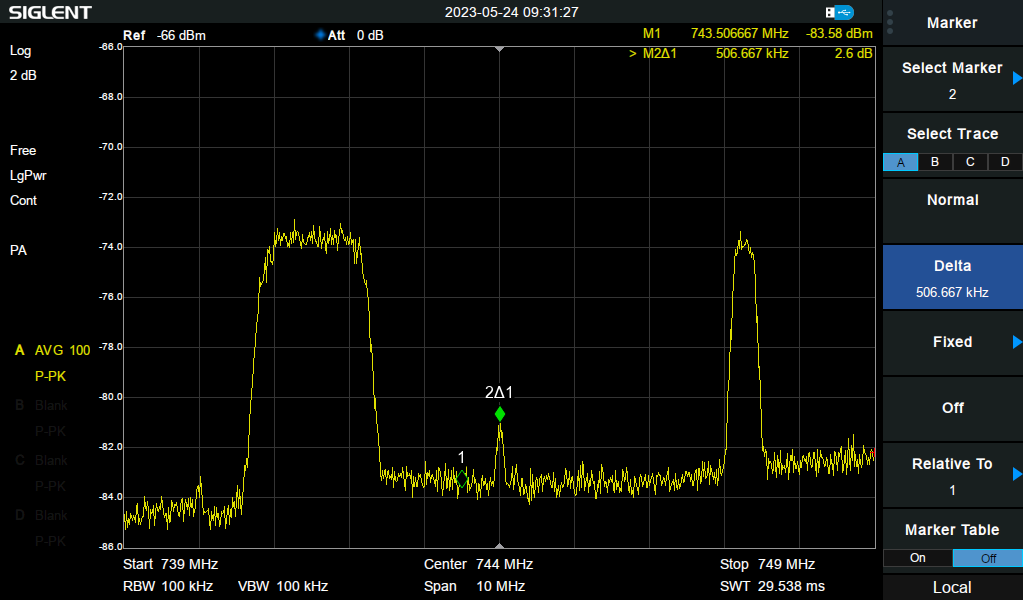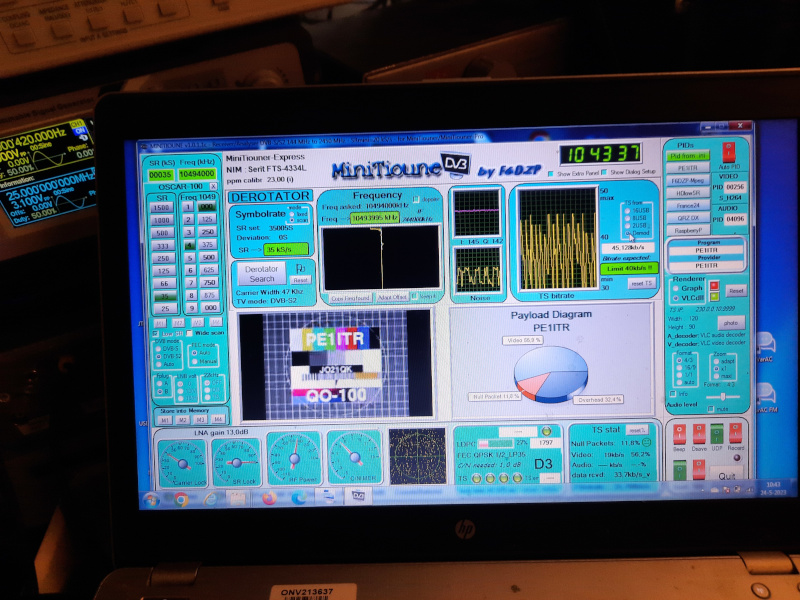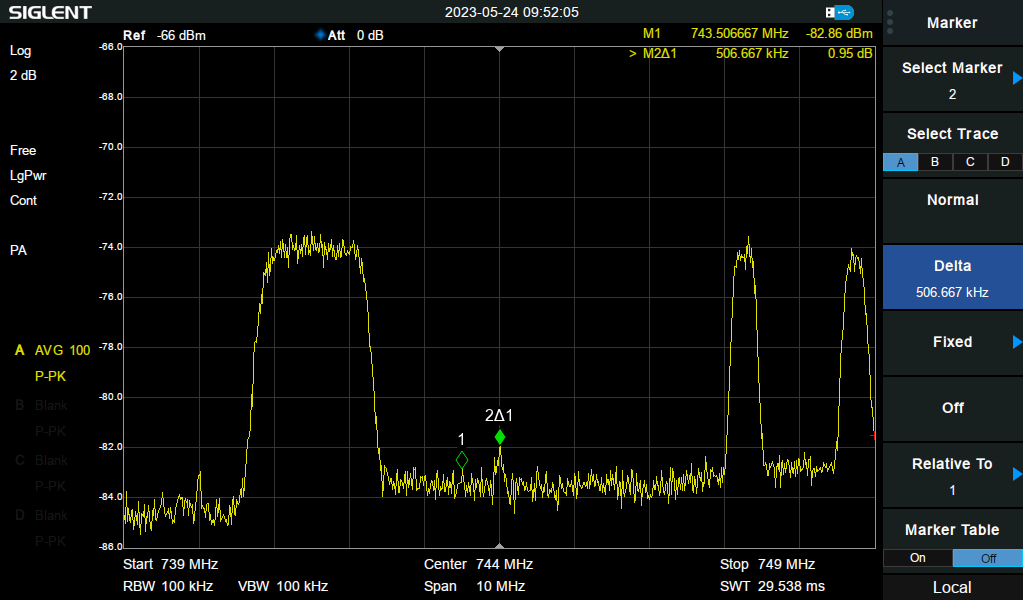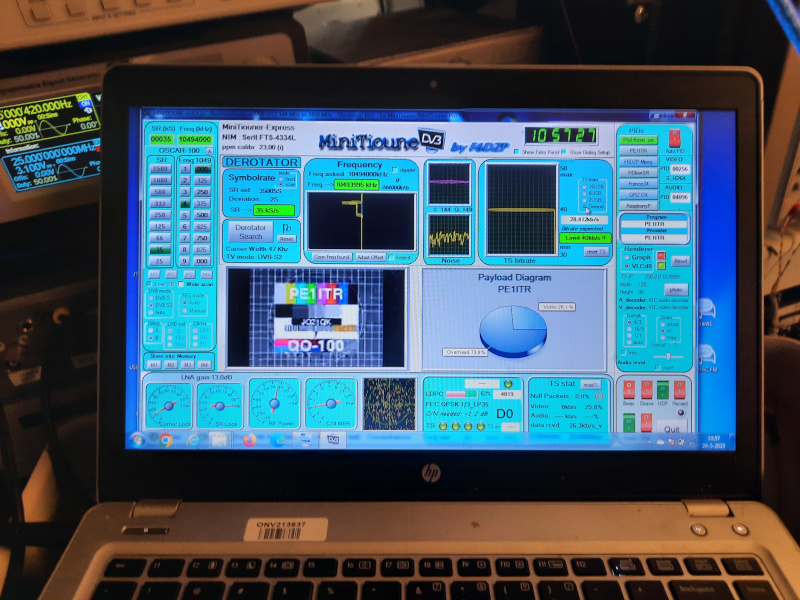DATV Moonbounce experiment
2023-05-24
Introduction
In the DATV Moonbounce experiment mentioned on this page, no image from the test card was demodulated. On this page I collect information why this was the case.
We used DVB-S(2) and this mode is designed for satellite downlink signals and not designed for situations where radio propagation causes too much interference. It appears below that we did have enough signal. However, EME radio communication also has to deal with other effects such as deep extreme short QSB, doppler shift, dispersion of the signal.
For comparison signals over the QO-100 transponder
To get an idea of which signal levels are sufficient to get a test image, I sent signals over the QO-100 transponder. The uplink is on 13cm and the downlink in the 3cm band.
It is difficult to set the signal level properly stable because it also depends on other users on the transponder. In reality, the signal level fluctuates by 1 dB around the displayed value. But hey, it gives you an idea..
The spectrum analyzer is directly connected to the LNB output.
DVB-S2 SR 35k FEC 1/2
Theoretically, at these settings, the C/N value should be > 1db. We see that the test card is demodulated with a signal level of 2.6 db above the noise.


DVB-S2 SR 35k FEC 1/3
Theoretically, at these settings, the C/N value should be > -1.2 db. We see that the test card is demodulated with a signal level of 1 db above the noise.


The effect of moon reflection on QPSK modulation
To be continued...
Reference
HOME | Go Back



